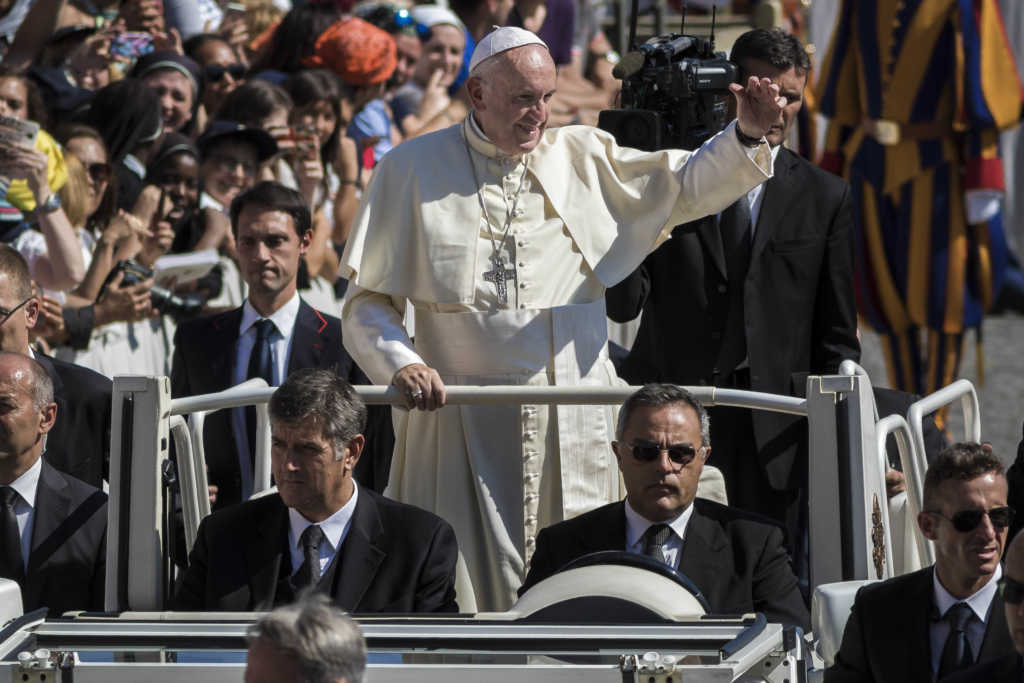“Use it well,” Albus Dumbledore says to Harry Potter in “Harry Potter and the Sorcerer’s Stone.” These words accompany his gift of an invisibility cloak to young Harry. Dumbledore knows that the cloak is a tool that Harry will have the opportunity to use responsibly… or not.
The Catholic Church has had the opportunity, recently, to think about the tools it wields as a church—and whether or not it is using them well. Nicholas P. Cafardi, a Catholic expert in canon law, said, “When it came to handling child sexual abuse by priests, our legal system fell apart.”
Cafardi was talking about the waves of sexual abuse reports that have rolled over the Catholic Church in recent decades. His sentiment came from the early 2000s, but the past six months have shown its continued truth: the Catholic Church has a long way to go when it comes to handling the sexual misconduct of its priests.
The Catholic Church has a long way to go because, historically, its bureaucracy and hierarchy have enabled abusive priests and clogged the lines of communication for people who wanted to report abuse. A confusing slew of instructions within canon law shows how any chain of command can allow depravity to continue.
Some might use this as an argument against institutional hierarchy, arguing that it encourages evil to take root. However, studies show that sexual abuse occurs at a rate of 6 percent in the general public, which is just as often as it does in the Catholic Church. There’s nothing worse happening within Catholicism than there is in the outside world, we just expect more of a religious institution.
As a public, we are just as shocked in 2018 as we were almost 20 years ago. At first, we were appalled that such widespread abuse could happen at all, but now we’re horrified that bishops could know about the abuse and choose to cover for their priests—and vice versa.
Columnist Ross Douthat, writing for the New York Times, points out that in the early 2000s it was conceivable that the Catholic Church could address its failure. The Church could have disciplined or removed malignant clergy and moved forward in repentance. Now, however, the ongoing strife and disagreement about this issue in the Church indicate a more pervasive crisis.
In other words, in 2002 the crisis was about sex abuse. Now, in 2018, it’s about leadership. In his column, Douthat wonders aloud if the Catholic Church has sunk from compromised to completely bankrupt in its morality.
Does a pecking order within leadership help or hurt morality within an organization? It is certainly a shock to see that a Christian leadership structure, established to promote unity and care for its members, could be used to mask corruption instead of expose it. But in this case, the answer to that question remains to be seen.
In the upcoming months, the Catholic Church will have an opportunity to use its legal and religious system well. Pope Francis has convened a summit that will meet at the Vatican in next month, specifically to discuss how the global Catholic Church can implement measures to better protect its “minors and vulnerable adults.”
Cardinal Blase Cupich of Chicago, who is on the planning committee for the summit, noted, “This meeting is the beginning of a worldwide reform that will need to be ongoing and will involve a process of initiatives on regional, national and diocesan levels.”
Millions of disenchanted Catholics await the decisions made in February.
If Dumbledore were to attend the summit, it’s not hard to imagine his contribution. He would peer in a kindly way over his half-moon spectacles, looking right at home in the long robes of Catholic clergy. Then he would say something like this: “You have been given great power. Your leadership will influence millions of lives both now and in the future. Use it well.”
As with anything, a leadership hierarchy is neither the culprit or the savior. It is simply a tool in the hands of individuals who implement it. Let’s hope the people who wield it at the Vatican Summit will have the humility and clarity to use it well.
–
By Meredith Harbman for Lightworkers. LightWorkers’ mission is to create engaging, uplifting and inspirational content that breaks through the clutter, building a community of sharing and igniting a movement in the real world that motivates people to celebrate and share the good all around them.


